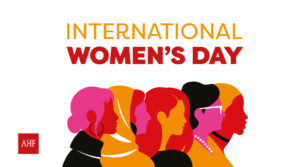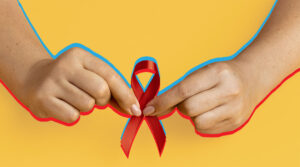Rash has been one of the symptoms traditionally associated with HIV infection. It is true that there may be a rash in the first few weeks after transmission, however we cannot think that any (or all) rash is related to this virus.
No type of rash is unique to HIV, says Medical News Today, a site specializing in the dissemination of health news. Since HIV affects the immune system, a wide variety of skin reactions can be triggered.
Signs on the skin
When the HIV infection is well established, that is, when a person has been living with the virus for months or years, skin manifestations are more likely to appear. This is because the immune system is weakened, this in the case of those who are not taking antiretroviral therapy.
When the defense system does not work as it should, viruses, bacteria, fungi and parasites find it easier to enter the body and thus trigger an episode of rash. Among the skin conditions that can be triggered are:
- Boils (painful, pus-filled bumps originating from hair follicles)
- Genital warts or warts in other areas of the body
- Skin cancer
- Intertrigo (inflammation of certain folds of the skin, usually moist)
- Candidiasis
- Psoriasis
- Seborrheic dermatitis
- Eczema
- Dermatitis
- Ulcers in the groin, which may be due to infections such as syphilis, gonorrhea, herpes simplex (known as genital herpes) or chickenpox
Possible causes
HIV-related rashes can be very diverse and may be triggered by different conditions, for example: your general health, the antiretroviral drugs you take, access to comprehensive medical care, or exposure to skin conditions that can be contagious
Acute infections, that is, those that arrive and manifest themselves very clearly, can be controlled with the appropriate treatments, however, living with HIV makes it more likely that these infections appear, compared to those who do not have the virus. Also, a previous rash may recur or new ones may appear.
On the other hand, it is also possible that chronic skin conditions, such as herpes or psoriasis, appear in those living with HIV. These diseases are characterized by outbreaks that then improve and disappear for a while, but end up returning. The severity of each outbreak is variable, but depends in part on the capacity of the immune system, in addition to the fact that there are some medications that help contain the severity of the outbreaks.
Finally, it is also possible that the rash is caused by some of the medications used to treat HIV, so if you suspect that your current treatment may have caused this type of reaction, it is important to see your doctor. It could be that your medicine is changed to another that does not have this effect on you. But remember that it is essential to talk with your specialist before suspending or ruling out a medication.
Go to consultation
If you already have an HIV diagnosis and notice a rash or skin lesion, you should consult your doctor so that he can prescribe an appropriate treatment and thus avoid complications.
See your healthcare team urgently if you have any of these symptoms: a rash that spreads rapidly, a rash accompanied by swollen lymph nodes or fever, or if you have other symptoms, such as nausea and vomiting, at the same time that it occurs the rash.
And remember that antiretroviral treatment is what will allow you to maintain a good quality of life and the best possible health for longer. For this reason, if you have not started taking your treatment or if you suspended it and want to resume it, at AHF Latin America and the Caribbean we can help you. Locate our offices in your country and make an appointment now.






